
• Lobster Mushroom is a mold living and feeding on the host mushroom
• Found throughout Oregon, mostly in old-growth forests
Lobster Mushroom (Hypomyces Lactifluorum) is not a real mushroom rather a mold or parasitic fungus, living and feeding on the host mushroom. The mold attacks and grows on Short-stalked White Russula (Russula brevipes) and Peppery Milky (Lactarius piperatus) transforming and changing their appearance and taste. The surface of the mushroom becomes bright orange or reddish-purple and unpalatable host mushrooms are transformed into a delicious edible.
Technically, Hypomyces Lactifluorum only parasitizes Russulas and Lactarius species. However, according to some sources, the mold could potentially parasitize some poisonous species. If you are not able to confirm the host, avoid this mushroom.
Identification
Lobster mushrooms are easily distinguishable, though, sometimes mistaken for a chanterelle. The entire body of the mushroom is fluorescent-orange (lobster-like) and smell like seafood. Older specimens can become bright-purple.
Gills of the host mushroom fused together converting into reddish blunt ridges or hard-visible pimples. The flesh is white and crisp.
Cap: Irregular, covered by bright orange to reddish mold.
Cap's Underside: Reddish blunt ridges or hard-visible pimples.
Spores & Print: Spindle-shaped, colorless.
Stem: Short, solid, covered by bright orange to reddish mold.
Flesh: White and crisp.
Habitat: Widespread in coniferous forests where Russulla and Lactarius are common.
Season: August-November.
Caution. Some guidebooks state that the host mushroom can be poisonous, making Lobster mushrooms toxic. But other sources assert that a chance that Hypomyces Lactifluorum attacks any other species is minuscule.
Where and When to Find Lobster Mushroom in Oregon
Lobster mushroom is found on the ground under a variety of trees, mostly under conifers, where its host mushrooms are common. Lobsters are found throughout Oregon, mostly in old-growth forests. In the wild, these fungi grow in coastal forests and in the woods of the Coast and Cascade Ranges.
Lobster Mushrooms are usually concealed among moss, leaf, and plant litter on the forest floor; so, look carefully.
Methods of Cooking
Lobster mushrooms are excellent for sautéing, frying, freezing, and drying. Use younger specimens.
Trim the dirty spots, carefully clean, and rinse mushrooms. Slice up the fruit bodies.
Lobster Mushrooms Sautéing (1 lb /450 g)
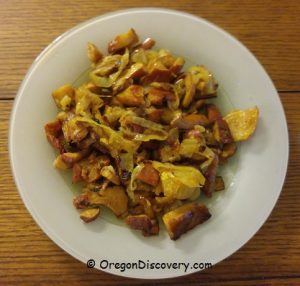
- Add water to a pan to cover all mushrooms
- Bring water to a rolling boil and cook 15-20 minutes
- Drain the mushrooms
- Heat a large skillet over medium-high heat
- Add 2 tablespoons butter or olive oil
- When the butter is melted, add mushrooms, shallot and pour 1 oz of Riesling
- Sauté them until all liquids are evaporated, stirring occasionally
- Continue sautéing for another five minutes or so, or until browned.
You May Also Enjoy
Disclaimer
This is not an official guide to wild mushroom foraging. Please, do your own research, be sure to practice with a mushroom expert before you pick up and consume any wild mushrooms. Before you start wild mushroom harvesting, learn to accurately identify poisonous mushrooms as well. All wild edible mushrooms must be thoroughly cooked. Make sure that you are not allergic to a new mushroom by trying a small amount before eating more.




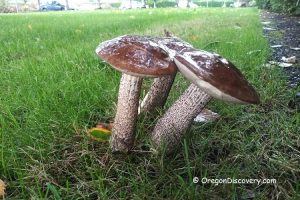
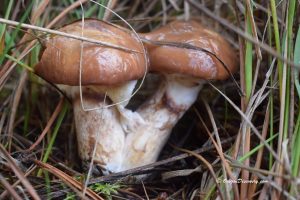
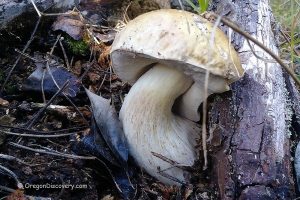
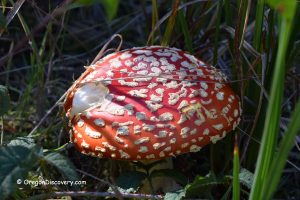
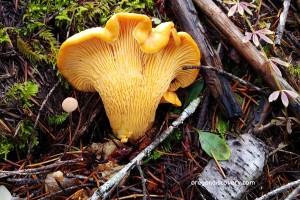
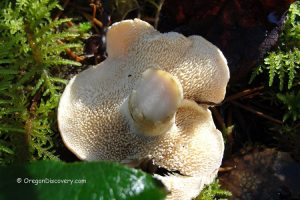



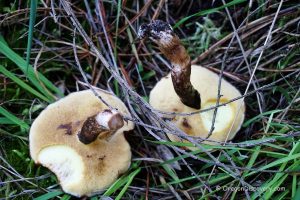
This is the coolest website ever! Thank you thank you! Please text me any updates related to mushroom foraging, swimming holes and just fun outdoor discoveries. 503–8 04–4376
Craig Carney